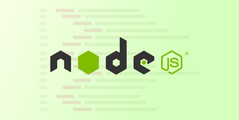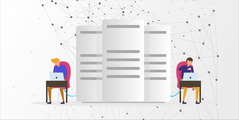Whether you’re undertaking mobile app development or creating a complex web application, navigating the product development journey can often be a complex and daunting task.
Embarking on the product development journey is both an exciting and challenging venture. The path to a successful product is strewn with critical decisions, methodologies, and strategic tools that can significantly impact the outcome of your endeavor.
Among these strategic tools are the Proof of Concept (PoC), Prototype, and Minimum Viable Product (MVP) – pivotal stages in the product development life cycle that help convert your vision into a tangible product.
Each serves a unique purpose, providing valuable insights at different phases of product development. Selecting the right approach can spell the difference between product success and failure.
This article aims to demystify these concepts, discussing their roles, differences, and the situations where each one proves to be the most beneficial.
Exploring Proof of Concept (PoC): Transforming Ideas into Reality
Discover the Power of Proof of Concept (PoC) as We Uncover the Process of Turning Ideas into Reality, Unlocking the Potential for Innovation and Successful Project Outcomes.
Understanding Proof of Concept (PoC)
A Proof of Concept (PoC) marks the first tangible step in the journey of product development. Its primary goal is to ascertain the feasibility of an idea or concept within a real-world context.
The focus of a PoC is primarily on the technical aspects, aiming to validate whether the proposed technology or methodology can effectively address an identified problem or fulfill a gap in the market.
Validating the Feasibility and Value of PoC
Validation during the PoC phase involves evaluating both the feasibility of the concept and its potential value. It addresses questions like, “Can this be built?” and “Will it deliver the intended value?”
The key objective here is to identify and mitigate technical risks early in the development process, leading to savings in terms of time and resources.
PoC in Action: Real-World Examples
To gain a deeper understanding of a Proof of Concept (PoC), let’s explore three practical instances from various industries.
Apparel Retail
Imagine an apparel retailer conceiving a new line of breathable sweatpants.
A PoC could be directed towards a demographic of athletes aged 40 to 60, identified through a survey that revealed discomfort experienced by this group while exercising in regular sweatpants during colder months.
The PoC might outline the necessary resources for sweatpants manufacturing, strategy for material procurement, production process details, and plans for the product launch.
Effectiveness assessment would involve evaluating whether the product aligns with pre-established Key Performance Indicators (KPIs), such as achieving a specific profit margin.
Software Development
A software company envisions a project management tool tailored for startups and small businesses. Their PoC could highlight the unmet demand for such tools within their target market.
The PoC would also provide a timeline for software development, assess whether supplementary tools are needed, and determine the company’s internal expertise to realize the project.
Restaurant Business
A parent company overseeing multiple restaurant chains plans to introduce an economically priced seafood restaurant aimed at lower-middle-class families.
The PoC for this project would involve factors like logistical considerations for potential locations, the permitting process, construction planning, sourcing ingredients and decor, and more.
The PoC might propose a phased approach, starting with a smaller-scale operation like a food truck or a food stall before establishing the first full-fledged restaurant in a coastal city.
Profitability within a reasonable timeframe would also be a subject of analysis.
Pros and Cons of Implementing a PoC
Creating a Proof of Concept offers several advantages, including early detection of technical challenges, risk minimization, and potential cost savings. However, it comes with its own set of drawbacks.
For instance, a PoC lacks user feedback due to its internal validation nature. Additionally, excessive focus on technical aspects might divert attention from the product’s core value proposition.
In essence, a PoC serves as the initial step to validate the feasibility and value of a business idea.
Let’s now transition to the subsequent phase in the product development journey: the Prototype.
Unveiling the Prototype: Giving Shape to Your Product’s Vision
Discover the Significance of Prototypes in Shaping Your Product’s Vision and Understand How They Act as Crucial Milestones Toward Creating a Polished and Successful End Product.
Understanding Prototypes
A prototype represents a preliminary visual and functional rendition of the final product. It blends design and functionality, providing a tangible manifestation of your idea.
Prototypes can vary in fidelity, being either low fidelity (basic, focusing on function) or high fidelity (detailed, resembling the final product’s look and feel). The choice depends on the development stage and the required information.
Exploring Low-Fidelity Prototypes
A low-fidelity prototype, often constructed using paper or wireframe software, delivers a rudimentary product representation. This suits the initial stages of development, facilitating idea validation and functionality feedback while saving time and costs.
Despite being less visually appealing and functional compared to high-fidelity prototypes, low-fidelity versions are invaluable in the early development process.
Benefits include swift creation, affordability, and easy iterations. Examples range from paper and cardboard models for layout feedback to wireframe prototypes addressing potential user interface concerns.
Delving into High-Fidelity Prototypes
A high-fidelity prototype constitutes an intricate simulation of the final product, typically crafted with software like Figma or Adobe XD. More visually appealing and functional, it finds utility in later development stages for soliciting feedback on design and usability.
Although more resource-intensive than low-fidelity counterparts, high-fidelity prototypes’ realism renders them indispensable in product development.
They offer aesthetics, functionality, and ease of iteration, though they might entail more substantial investments of time and resources.
Examples encompass clickable, interactive prototypes for user interface interaction and coded prototypes for lifelike representation.
Understanding Working Prototypes
A working prototype stands as a functional model of the product, employed to evaluate usability and functionality in a real-world context. While more resource-intensive, their realism offers a comprehensive view of the final product.
Working prototypes provide full functionality, realism, and ease of iteration, albeit their creation might be more time-consuming and costly.
Examples comprise physical prototypes for realistic testing and software prototypes for assessing functionality.
When selecting the prototype type, consider the product’s functional significance, the requirement for real-world feedback, and available resources. Despite their challenges, working prototypes are instrumental in a holistic product development strategy.
Advancing Through Prototype Iterations
Prototyping follows an iterative process. Each version you create brings you closer to the final product by refining design and functionality based on user feedback and testing.
These iterations furnish valuable insights, aiding in error rectification, enhancing user experience, and better aligning the product with the needs of the target audience.
Pros and Cons of Prototype Utilization
Prototyping boasts numerous merits. It delivers early user feedback, mitigates risks by pinpointing design flaws and usability concerns, and secures stakeholder support by showcasing the product vision.
However, crafting a prototype can be time-intensive and necessitates investment. Additionally, there’s a risk of becoming overly attached to specific design elements or functionalities from the prototype, potentially impeding flexibility and adaptability in later development phases.
Next, let’s delve into the Minimum Viable Product (MVP) phase.
Embracing the Minimum Viable Product (MVP): Testing the Waters
Understand the Crucial Role of the Minimum Viable Product (MVP) in Market Testing, and Discover How This Iterative Approach Facilitates Efficient Validation of Your Product’s Viability and Market Acceptance.
Defining the MVP (Minimum Viable Product)
An MVP or Minimum Viable Product represents a version of your product equipped with essential features to meet early customers’ needs and gather feedback for future development.
An MVP serves as a means to gauge your product’s fit within the market. It enables you to assess whether your product aligns with your target audience’s requirements.
An MVP includes only core functionalities necessary for basic product operation, excluding all “nice-to-have”
Complete Comparison: PoC vs. Prototype vs. MVP
Delve into a comprehensive analysis with our complete comparison of PoC, Prototype, and MVP, to gain a thorough understanding of their unique features and decide which approach suits your project best.
POC Evaluation: Assessing the Potential of an Idea
A Proof of Concept is the initial stage where you validate the feasibility of your idea. It answers the question, “Can we build this?“. A successful PoC doesn’t mean the product will succeed in the market; it only affirms the idea’s technical feasibility.
Prototype Comparison: Decoding the Variations in Design and Functionality
A prototype comes after a successful PoC and is a preliminary visual model of the product. It gives stakeholders an understanding of the product’s look, feel, user flow, and overall functionality.
A prototype enables feedback from the target users and stakeholders before actual development begins.
MVP Launch: Strategies and Insights for Initial Market Entry
An MVP, or Minimum Viable Product, on the other hand, is a more developed version of your product that you release to your early adopters. It’s not the final product, but it has only the features to attract customers and validate your product in the real market.
It includes only the core functionalities of the product that solve the primary user problem. It allows the team to learn from real-world feedback, pivot if needed, and build on the product.
Moreover, MVPs are a great way to manage and minimize development costs. By testing the product’s core functionalities in the real market, you can ensure your full investment in the final product will be worthwhile.
Each of these stages has a unique role in the product development lifecycle.
| Aspect | Proof of Concept (PoC) | Prototype | Minimum Viable Product (MVP) |
| Purpose | Verify the technical feasibility and potential value of the idea. | Visualize and test the design and functionality of the product. | Test the market with a minimal, functional product. |
| Development Stage | Early stage of product development. | After PoC validation, before MVP. | After Prototype, before full-scale product release. |
| Scope | Focuses on technical aspects. | Focuses on design and functionality. | Includes core features essential for market validation. |
| User Feedback | Internal validation, no user involvement. | Gather user feedback on design and functionality. | Real user feedback and insights. |
| Level of Detail | Basic, limited functionality. | Varies from low to high fidelity, depending on the prototype type. | Fully functional but minimal set of features. |
| Time and Cost | Relatively quick and cost-effective. | Moderate time and cost, depending on prototype complexity. | Efficient use of resources due to minimal features. |
| Market Validation | Does not validate market demand. | Partial validation through user feedback, but not a full-scale test. | Validates market demand and helps shape future development. |
| Risk Mitigation | Identifies and mitigates technical risks early in development. | Reduces design and functionality risks and usability issues. | Reduces the risk of developing a product that doesn’t meet demand. |
| Business Focus | Technical feasibility and value proposition. | User experience, design, and functionality. | Market fit, user feedback, and scalability. |
Understanding their differences and knowing when to use each one can significantly enhance the chances of your product’s success.
Next, let’s choose the right product development strategy for your product.
Choosing the Right Product Development Strategy for Your Product Success
Product development strategies are not one-size-fits-all solutions but approaches tailored to each project’s unique needs, risks, and potential.
Determining which approach to use—be it a POC, Prototype, or MVP—depends on several factors:
When to Choose a POC: Guiding Circumstances and Indicators
Choosing a POC as a development strategy is ideal when your idea or product involves novel, untested, or uncertain technologies, processes, or concepts.
It’s also an excellent option when you want to verify the technical feasibility of your project or validate its core concept without going into the complexities of the design or the functionalities.
It helps to prevent potential hiccups later in the development process, saving time and resources.
When to Choose a Prototype: Identifying the Right Scenarios
Prototyping should be the go-to strategy when you want to visualize how your product will function and look before full-scale development.
It is particularly helpful when you must demonstrate the product’s functionalities to stakeholders, seek user feedback, or refine the user interface and experience.
A prototype allows you to rectify design issues or usability hitches early on, saving potential redevelopment costs down the line.
When to Choose an MVP: Recognizing the Optimal Conditions
An MVP is the right strategy for testing your product in the market, getting real user feedback, and learning about your target audience’s interaction with your product.
MVP development is ideal when you have a well-defined concept and a clear value proposition and aim to release the product to early adopters to verify market demand and product-market fit. This strategy can save substantial resources by ensuring the final product is closely aligned with market needs and expectations.
Understanding these guiding factors lets you determine the most suitable approach for your product development journey.
But remember, these strategies often work best when applied sequentially, evolving from a POC to a Prototype, and finally, an MVP. It’s all about progressively refining and validating your product idea until it’s ready for the market.
Everything depends on what product idea you are building the product on
The path to a successful product commences with a well-conceptualized idea, but the journey unfolds based on your strategies. A reasonable start often involves initiating a PoC, offering a foundational validation of your innovative concept. This stage substantiates your idea’s technical viability and business value, paving the way for the next steps.
Further, enhancing this base with a Prototype breathes life into your concept, introducing its design and functionality for stakeholder feedback. This tactile model of your product vision becomes a mirror reflecting its potential strengths and areas for improvement.
When you’ve iteratively polished your prototype to your satisfaction, it’s time to step into the real market with an MVP (minimum viable product). This minimal yet functional version of your product is a real-world experiment, providing invaluable feedback from actual users and direct insights into market acceptance.
Nonetheless, remember that these are guiding principles rather than rigid dictums. The optimal route varies, intertwining with your specific product’s attributes and developmental stage.
At every juncture, align your decisions with the unique needs of your product, market insights, and your ultimate business goals. In this journey, your product idea remains the compass, and the strategies you adopt are the routes to success.
Transform your vision into reality with Rapidops
You’ve learned about Proof of Concept, Prototype, and Minimum Viable Product concepts and how to select the most suitable one based on your project’s unique circumstances.
However, even with a solid understanding of these strategies, their effective implementation requires expertise, a team well-versed in software and mobile app development challenges, and the capacity to adapt to changes in scope or market demands rapidly.
This is where Rapidops comes in.
Rapidops offers agile digital product development services tailored to individual business needs. They understand the importance of your idea’s value proposition, target audience, and development costs. Whether you need a Proof of Concept, a mobile app prototype, or a Minimum Viable Product, their experienced team can deliver success. With their end-to-end expertise, they can efficiently transform ideas into impactful products and platforms. Contact Rapidops today to embark on a successful product development journey.
If you have any lingering questions about the differences between PoC, Prototype, and MVP, we’ve compiled a helpful list of frequently asked questions (FAQs) to provide you with the answers you seek.
How is POC different from a prototype or MVP?
A POC validates an idea’s technical feasibility and business potential. On the other hand, a prototype is a visual representation or simulation of the product, often used to gather user feedback on design and functionality. An MVP is a fully functional, though minimal, version of the product released to the market to learn about its acceptance and gather further development insights from real users.
What’s the difference between a prototype and an MVP?
A prototype primarily validates design and functional assumptions and is not typically released publicly. An MVP, however, is a public release of the product with just enough features to be usable by early customers, who can then provide feedback for future product development.
Is POC and prototype the same?
No, a POC and a prototype serve different purposes. A POC is used to validate whether an idea is feasible and worth pursuing. At the same time, a prototype demonstrates how the final product will work and look without having all the functionality of the final product.
What is MVP vs. POC vs. pilot?
An MVP is a minimal version of the product that is market-ready, a POC tests the feasibility of an idea, and a pilot is a small-scale preliminary version of the product or service released to a limited audience to test and learn before a full-scale release.
When should I use a PoC, Prototype, or MVP?
Using a PoC, Prototype, or MVP depends on the stage and needs of your product development process. A POC is used early on when you need to verify the feasibility of a concept. A prototype is used to visualize your product for user testing and feedback. An MVP is used when you’re ready to launch a minimal but functional product to the market to measure its acceptance and gather valuable insights for further development.
What are the advantages and disadvantages of each approach?
Each approach has its advantages and disadvantages. For instance, a POC can save resources by determining the feasibility of an idea early on but might lack the feedback element provided by the other two methods. A prototype provides valuable user feedback but could be time-consuming and costly if changes are required. An MVP validates a product idea in the market but could risk a negative first impression if not sufficiently polished or functional.
How do I create a PoC, prototype, or MVP?
Creating a PoC, Prototype, or MVP requires a clear understanding of your product idea, target audience, and the problem your product intends to solve. It involves identifying core functionalities, designing and developing features, and continuously testing and iterating based on feedback.
How do I evaluate the success of a PoC, Prototype, or MVP?
- The success of a PoC is evaluated based on whether it proves the feasibility and potential value of the idea.
- The success of a prototype is determined by user feedback on design and functionality.
- An MVP’s success is gauged based on market reception, user feedback, and the product’s ability to meet set business goals.
What comes after POC and MVP?
After a successful POC and MVP, you would move into further development stages, building upon the basic features of the MVP based on user feedback and market learning. The product is continuously improved and scaled, additional features are developed, and marketing strategies are implemented to gain a larger market share.

Saptarshi Das
Content Editor
9+ years of expertise in content marketing, SEO, and SERP research. Creates informative, engaging content to achieve marketing goals. Empathetic approach and deep understanding of target audience needs. Expert in SEO optimization for maximum visibility. Your ideal content marketing strategist.
What’s Inside
- Exploring Proof of Concept (PoC): Transforming Ideas into Reality
- Unveiling the Prototype: Giving Shape to Your Product’s Vision
- Embracing the Minimum Viable Product (MVP): Testing the Waters
- Complete Comparison: PoC vs. Prototype vs. MVP
- Choosing the Right Product Development Strategy for Your Product Success
- Everything depends on what product idea you are building the product on
- Transform your vision into reality with Rapidops

Let’s build the next big thing!
Share your ideas and vision with us to explore your digital opportunities
Similar Stories
- Engineering
- undefined Mins
- September 2022

- Engineering
- undefined Mins
- January 2016

- Engineering
- 5 Mins
- November 2015


Receive articles like this in your mailbox
Sign up to get weekly insights & inspiration in your inbox.
